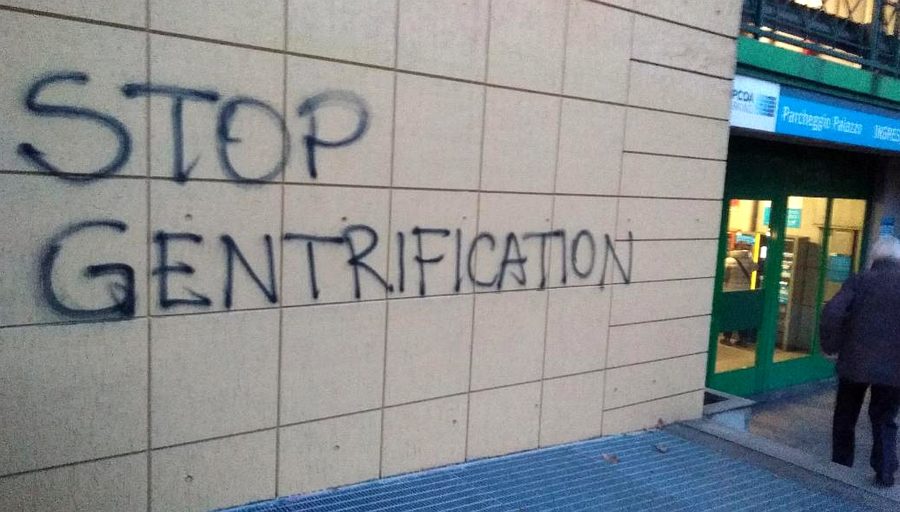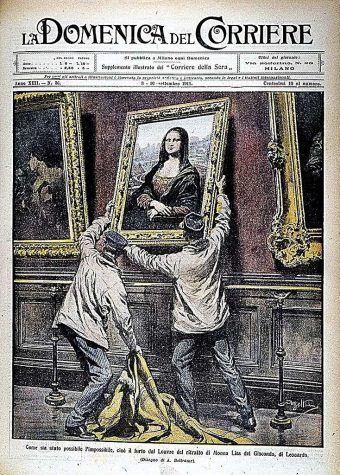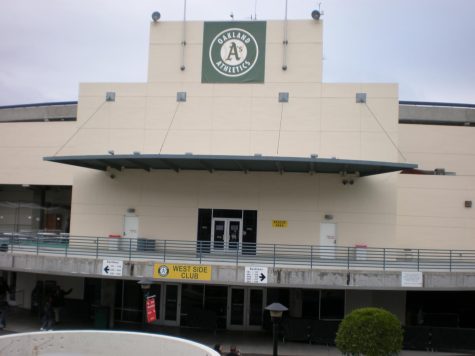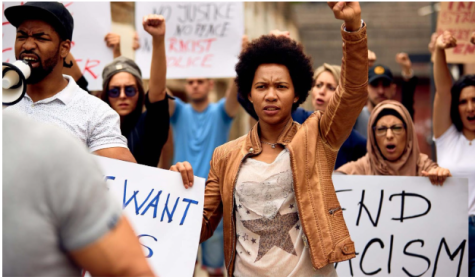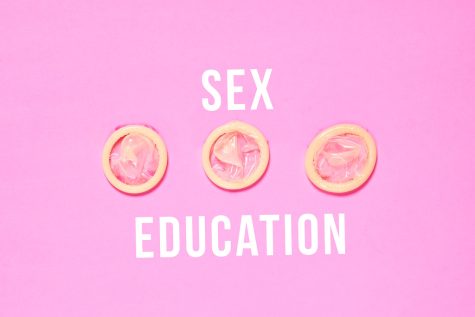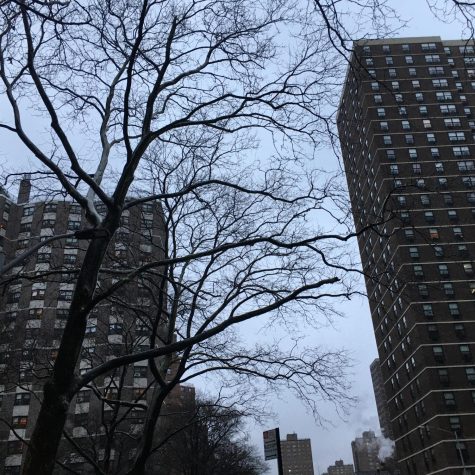NYC’s diverse culture seemingly fading: The real consequences of gentrification
November 7, 2019
Ava Faust had lived in her Alphabet City apartment for 13 years. She had memorized every street and corner and knew most of her neighbors there. She had always contributed to the community, and, most importantly, she had loved the neighborhood as her home. Recently, her rent became too high for her to keep up with, and she had no choice but to leave her beloved home behind. She now resides in Brooklyn.
The process of gentrification in Ava Faust’s Alphabet City neighborhood began with the little things such as the new CVS and Starbucks moving into old local shops, and the increase of wealthier, white families moving into the neighborhood. Everything Faust ever knew seemed to be changing in front of her very eyes. What she had once called home wasn’t feeling the same way anymore. She felt helpless, and after all, what could she do? This drastic change was a cycle that all New York City residents know too well.
In New York City, gentrification seems to have hit every single neighborhood. The ongoing process continues to displace the natives of districts. Areas that used to be known as both inexpensive, dodgy or suspicious have become homes to the rich and their kids in strollers. As a result, low-income residents are displaced, and the culture in a community is diminished. “New York City has no longer felt as much like home. All the excitement has just been replaced and I think it’s because of the decline in diversity. It’s just the same cookie cutter white families now.” Says Ava Faust
So what exactly is gentrification? The best way to define it is the procedure of up-scaling and changing a living area to eventually affect the cost and character of it. Gentrification often happens as wealthier residents move into an urban area, which is why the rent increases, and the cost of everything in the district does too.
Typically with gentrification, neighborhoods become “nicer,” and crime rates are lower, which attracts wealthier people, but gentrification often results in “displacement” of lower-income residents. The Merriam-Webster dictionary definition of the word displacement is “the movement of something from its place or position.” Displacement of these residents is when lower-income residents are pushed out of their homes and neighborhoods due to rising rent.
The process of low-income displacement starts with the rent increase; rent gets so high that it becomes impossible for residents to keep living in their apartments. Residents have to leave their homes and try to find another affordable area, but many areas are facing the same problem. Many residents dealing with displacement face a severe dilemma: displacement can even result in homelessness.
Alphabet City is a perfect example of simple gentrification. The neighborhood is described as a “Bohemian enclave within the east village” by The New York Times. Alphabet City is known for its greenery, peaceful vibe, and Tompkins Square Park.
In Alphabet City, you will find multiple parks, as it is known as one of the greenest areas in Manhattan. Even though Manhattan has been gentrified for years, Alphabet City seemed to be one of the few areas in the borough that was still affordable and authentic.
Back in the day, Alphabet City was known as an area filled with crime and drugs, and one wouldn’t dare walk along some of the streets at night because you could get robbed. The neighborhood was known as the home of heroin, and many addicts roamed the streets or lived there. It was notorious for being one of the more scrappy areas in the East Village.
In an article by The New York Times, the article states, “A couple of decades ago, when violent crime related to drug-dealing was a concern, especially in the easternmost blocks, both arrivals and longtime residents seemed to take the problems in stride. The ‘A’ on Avenue A stood for ‘alive,’ according to a famous saying, while Avenue ‘B’ was for ‘breathing,’ Avenue ‘C’ for ‘comatose’ and Avenue ‘D’ for ‘dead’.”
Dave Derby and Katty Jones reminisce about when they were struggling artists in the 1990s trying to make it in the music business while living in an apartment on Third Street between Avenue A and B.
“I decided to live in Alphabet city because it was where everything interesting was and many artists lived. I liked the general feel of that neighborhood. I liked that it was a bit more diverse than other New York neighborhoods. And it was less expensive.”
Dave Derby explains, “The last apartment we lived in had a bathroom, kitchen, and bedroom all in the same area. We had some mold problems too. We had this kind of junkie guy as a superintendent, and the ceiling collapsed one time. We had roaches and mice too.” This was the picture he painted of Alphabet City in the 1990s.
Now Alphabet City has become a lot safer, which is suitable for its current residents. However, recently, gentrification has nudged its way into the neighborhood, and people who aren’t rich can’t afford to live there any longer. New buildings are asking for very high rents. For example, “The Adele” is an apartment building on 2nd Street between Avenues C and D with valet service, floor to ceiling windows in every apartment, custom Italian kitchens, built-in Bluetooth speakers, a rooftop terrace, a rec room, a gym, and even private balconies in some apartments. However, these fancy buildings bring problems.
An article by New York Post said, “‘These developments bring Walgreen’s, boutique shops and upscale restaurants, not bodegas where you can go and shop on credit,’ says Eric Lugo, 54, who’s lived on Avenue C for the past 24 years, though he does admit the changes have made the area both trendy and safer. ‘These developments ended the days when you sat on your stoop and knew virtually everyone who passed by name. It’s my neighborhood, but it used to be my community, and losing that is sad.’”
The Adele is next to the Lillian Wald Houses, a public housing development that is at serious risk. With more of these higher-income residents moving a block away, only time will tell what will happen to the development and those living in it.
CVS, Starbucks, as well as The Adele aren’t the only changes in Alphabet City. Tons of new big-windowed buildings with modern finishes are showing up. New cafes and expensive trendy clothing stores appear more and more as the years go on.
Ava Faust, a former Alphabet City resident, noticed those changes in the neighborhood: “As a kid I would tell my friends I lived in Alphabet City and then their parents wouldn’t want them to come over, towards the end of my time living there whenever I would mention where I lived I would hear, ‘oh that’s so cool!’and ‘that neighborhood is so artsy.’ It’s crazy how much my block has changed over the years; we used to have this local candy shop where you could buy treats for really cheap, and then a Rite-Aid bought them out. I miss what Alphabet City used to offer, the occasional parades, the amazing local restaurants, just the overall friendliness.”
With a neighborhood that is so full of life and beautiful like Alphabet City, the loss of its culture is extremely devastating to the city. Back in the day, nobody wanted to even step foot into Alphabet City, but now it has seemingly become just a hipster hang-out spot.
Alphabet City’s gentrification is a crisis of its character and culture. Watching this fade away is disturbing and leaves many questions for the future of this city. “I was just walking down the street where I used to live, and I saw this high-end Japanese restaurant that just opened up, and I couldn’t imagine something like that ever being there when I lived on that block,” said Derby.
Alphabet City is only a small piece of the more complicated puzzle, which is much grimmer: the complete gentrification of New York City. New York City is known as a melting pot or the metropolis of diversity and culture. That’s what we are famous for. For tourists, the first thing they associate New York with is its variety and diversity.
The first thing you may think of when you think of New York City is Times Square, bright and colorful with so much life, just like the city itself. Or maybe you think of the Statue of Liberty, which represents the welcoming of immigrants to our city.
Brooklyn, for example, a borough that knows gentrification too well is on its way to becoming “the new Manhattan,” has a clear pattern. When the white residents move in, other races are pushed out.
The New School’s Center for New York City Affairs explains, “The five neighborhoods with the largest increase in white residents accompanied by a decrease in residents of another racial or ethnic group are all found in Brooklyn […] Between 2000 and 2010, these neighborhoods all saw an increase of between 6,700 and 15,600 White residents, paired with a simultaneous decrease in Black residents, Latino residents, or both.”
Bedstuy is one of these Brooklyn neighborhoods that has experienced this decline in diversity. iSchool student Isabel Wilder, who recently moved from Forest Hills, Queens to Bedstuy Brooklyn, said, “I know there are areas of Bedstuy that have already been completely gentrified and I feel like this area is slowly starting to become like that.”
Even though she just moved to the area, she discusses how she’s noticed changes every day that she has lived there so far. Wilder’s neighbors have lived in Bedstuy their whole lives and have watched their home morph into something unrecognizable.
These people have grown up here and have a special connection to their neighborhood. “I think there are a lot of pros and cons to gentrification to a certain degree where it can help, but displacement is a real issue, and it’s taking people native to an area out of their homes,” says Wilder.
In areas like Brooklyn and Alphabet City, you could say that gentrification is taking away the crime and getting drugs off the streets. Still, there is a significant loss of cultural identity.
Though this data is Brooklyn-specific, it suggests the effect that gentrification is having on non-white populations throughout the rest of the city. When gentrifying an area often, there is this idea associated with it that it is benefitting the area.
People believe that gentrification will help improve an area and help it become “safer, and cleaner,” etc. But what isn’t recognized is that the reality of gentrification is that the areas just become whiter and less diverse.
Fordham Law News states, “In recent years, parts of Brooklyn, the Bronx, Queens, and Manhattan have seen an influx of high rises, green spaces, and private businesses with little to no input from current community residents. Ultimately, these changes are not meant for low-income Black and Latinx people, but an ever-growing group of affluent white professionals and tourists.”
Gentrification doesn’t benefit non-white residents. High rises, green spaces, and private businesses seem helpful to these neighborhoods, but the community doesn’t get a say in what is changed, and all these things do is push out the non-white populations.
Professor Hamilton, an expert and an author of a book that discusses the environmental impact that gentrification has on neighborhoods, said,“Gentrification is not just about the cost of a neighborhood, but it’s also about who feels at home in the neighborhood and whether you feel that new amenities and new parks and other spaces are made for you.” And neighborhoods all around the city are losing it’s homey and comfortable feel due to gentrification.
Eva Phillips, who worked on the Urban Displacement Project, created a map showcasing the neighborhoods of New York City that are currently undergoing gentrification, have been gentrified, or aren’t yet gentrified.
When Eva discussed why she started working on this project, she explained, “I became interested in housing because I think it’s a fundamental human right, everyone should be entitled to safe, affordable housing, and opportunities and that’s just not how housing is discussed in our country.”
And this is true, and housing is essential to living when you think of the things that you need to survive, you think of food, water, air, and most importantly, shelter.
The people of color that are being displaced due to gentrification are losing an essential need for survival. And those who are being displaced had absolutely no say in it and have lost their voice in what they deserve.
But, the issue of gentrification’s effect on race doesn’t just affect the people who are being displaced. With all of this culture fade, NYC is seemingly becoming something you wouldn’t even think to call it “boring.”
It’s getting more boring with every new artisanal donut shop, every garden cafe with string lights, every new CVS, every new three-story wooden apartment with a front yard, and every local store or restaurant closing.
An anonymous iSchool student states, “My block used to be mainly Hispanic and Asian, but over time has gotten some Park Slope spillover. Now it is largely white, and my block parties no longer have awesome drums and music … Just little white kids on scooters.”
Almost everything that makes NYC great is because of its culture. What would we look like without it? It’s clear that the evidence is pointing to the decline of people of color in neighborhoods due to gentrification, so if the problem continues and NYC becomes entirely gentrified, how will we retain what makes New York City great? We wouldn’t be such a vast cultural entity any longer if gentrification continues and in the end we would blend into all of the other cities.
A recent study states that the U.S. city with the highest amount of homeless people in NYC. Many are experiencing the threat of displacement. Currently, they are scared that they will be removed from their homes.
A New York Times article states, “For Mr. Rojas, that shift is already underway. He and his fiancée, Anamiledys Rosario, 33, a clinical social worker who moved to New York from the Dominican Republic in 1990, were recently displaced from their rent-stabilized Inwood apartment.” Inwood is another diverse Manhattan area that is at risk of facing gentrification.
Even areas that have already been gentrified can gentrify even more. Another anonymous iSchool student states, “I used to live in the West Village; however, I had to move because my landlord wanted to increase our rent by double what we were already paying, and since the rent doubled and we left, it has increased even more.”
Displacement seemed like something that only happens to the few unfortunate, like something out of a book or a tragic tale. But this is happening everywhere around you; people can’t live in their homes anymore because of this issue.
As an article in Berkeley News states, “In 2018, 515 census tracts in the region were designated as Opportunity Zones under a program that provides tax incentives for private investment in low-income urban areas. Twenty-three percent of the tracts are located in gentrifying neighborhoods, and an additional thirty percent are in neighborhoods at risk of gentrification.”
That means that areas of NYC that are supposed to be reserved for people of low-income are either already on their way to becoming gentrified, which most likely means displacement for these low-income inhabitants or they are at risk of becoming gentrified.
This is a crisis. These are areas that are specially made for those with low-income, the fact that these areas are becoming gentrified is worrisome because what is going to happen to these inhabitants?
Opportunity zones, which is “an economically-distressed community where new investments, under certain conditions, may be eligible for preferential tax treatment.” As stated by the IRS. Opportunity zones are some of the only affordable regions for the low-income in NYC, meaning they will probably just get pushed out of the city entirely. And if the low-income gets wholly pushed out of NYC, then this leads to the substantial cultural problem that is already underway.
Landlords will often use specific tactics to try and get low-income residents out of their buildings so that they can make space or high-income residents rent out their apartments. Usually, along with policies that are trying to kick out low-income residents, some strategies are racially selective.
“What we found and what we know about gentrification is that you need to look at the history of a neighborhood, and when you do, there are often racially discriminatory housing policies,” Eva from Urban Displacement Project explains.
The history of a neighborhood is an essential piece to the puzzle. When looking at what previously happened in a community, you can often connect the dots and notice a clear pattern: when it comes to housing policies, it’s only in favor of the white person.
Joshua from Morristown, New Jersey, says, “I remember the days of ‘blockbusting’ in the ’60s, and ’70s were when the white owners of homes were told that minorities would be moving into the neighborhood. These frightened whites would sell their homes to the real estate ‘vermin.’ These vermin would sell the houses at highly inflated prices to minorities, and whites fled to the suburbs. East Flatbush is a neighborhood that comes to mind as I used to live there on East 43rd Street and Lenox Road. Now the children and grandchildren are pushing out the minorities by rent gouging and evictions to build condominiums. The chickens have now finally come home to roost.”
What Joshua is saying is a real-life example of these landlord tactics that are so toxic. They cheat the low-income into paying more than they can afford and kick them out when they can’t any longer to find someone who can.
This city is supposed to be the city where you can make it, the city of opportunity. In the 1800s, when immigrants were on boats first arriving in NYC, they believed that they finally had a new beginning. Because that’s the message that we put out into the world about ourselves. We provided a space where you could reinvent yourself and make it big. Where has this message gone?
It doesn’t seem to apply to these people that are finding it harder and harder to keep up with the rent everyday, the people who are watching the local stores that they grew up with close, the people who are watching their childhood friends and their families move out of the neighborhood because they can’t afford it anymore, and the people who are voiceless in every change that their proximity makes to push them out.
Change is possible, and even though gentrification seems like an unsolvable problem, there are cases of some cities where gentrification has benefitted the neighborhood. But to do this with New York, we have to think about the people that have already been living in these neighborhoods. We need to think about what consequences our actions will have on the people. Because, when we don’t listen to everyone’s thoughts or don’t give certain people’s voices, that’s when we are losing a considerable amount of culture.


